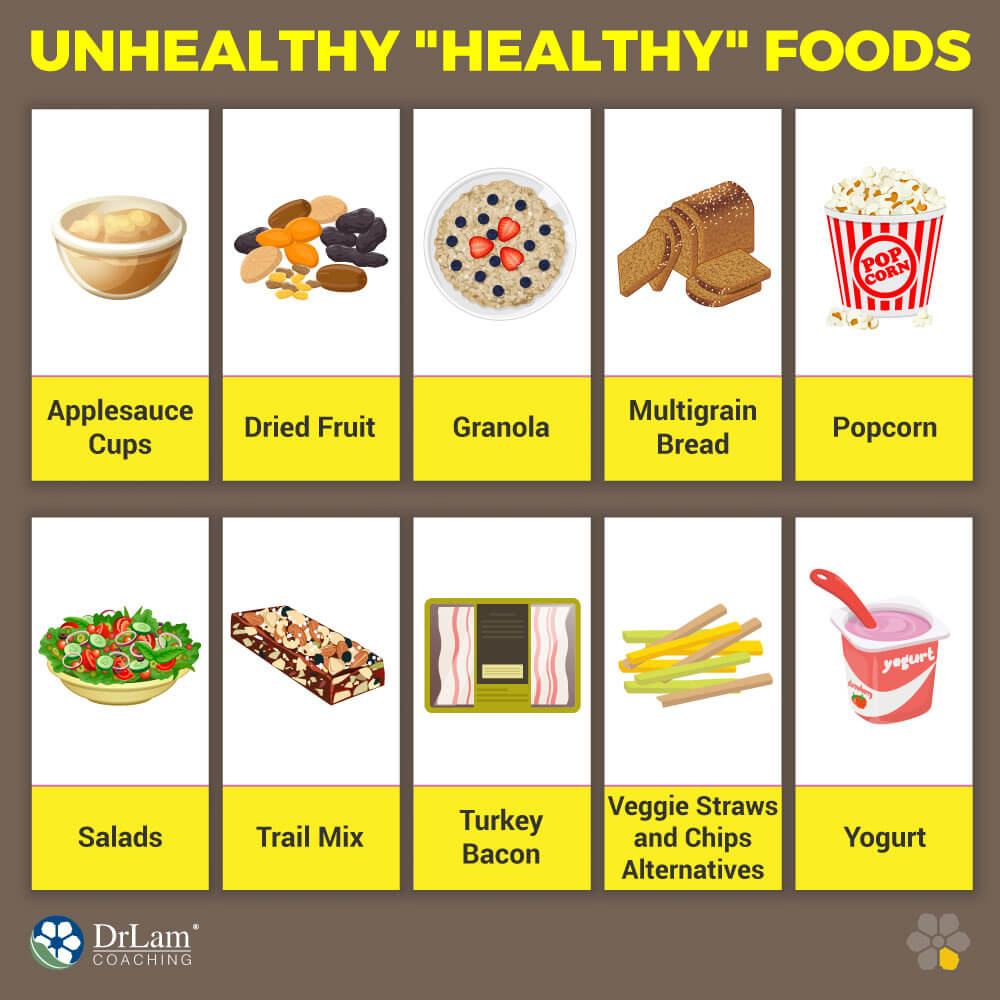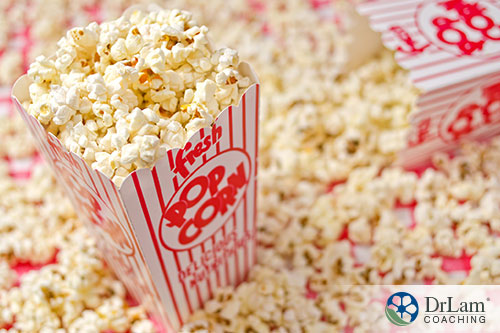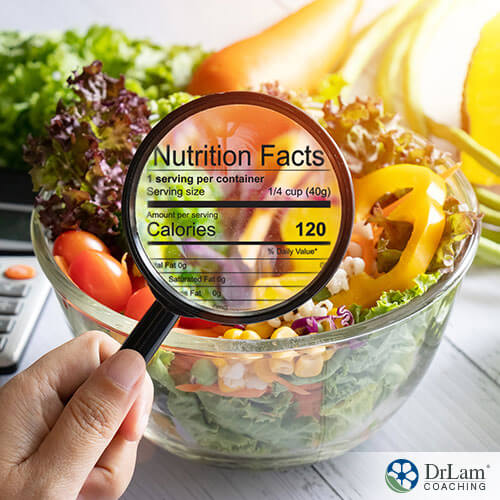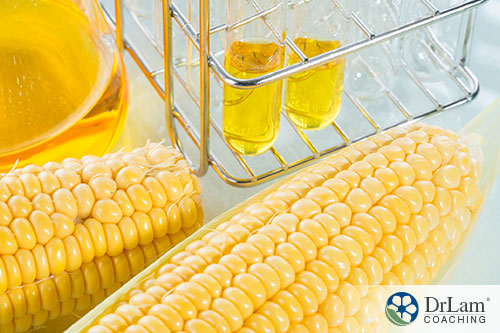 Healthy eating is finally getting the recognition it deserves. Many years ago, healthy food was the only option available. So there was no debate about whether you should reach for the diet soda or low-fat yogurt. Nothing had preservatives, artificial colors, and flavoring, or added sugars and sweeteners. The everyday diet consisted of fresh fruits and vegetables, whole grains, and free-range meats. But, with the introduction of hydrogenated oils and chemicals that enhance food flavoring, came a new decadent market. We now have ‘healthy’ foods that are unhealthy.
Healthy eating is finally getting the recognition it deserves. Many years ago, healthy food was the only option available. So there was no debate about whether you should reach for the diet soda or low-fat yogurt. Nothing had preservatives, artificial colors, and flavoring, or added sugars and sweeteners. The everyday diet consisted of fresh fruits and vegetables, whole grains, and free-range meats. But, with the introduction of hydrogenated oils and chemicals that enhance food flavoring, came a new decadent market. We now have ‘healthy’ foods that are unhealthy.
So, you may be wondering, what exactly are ‘healthy’ foods that are unhealthy? They are essentially junk food in disguise. These non-nutritional, synthetic, chemical-laden food choices dominate the shelves of most food stores. Canned and dried fruits, cereals and breakfast bars are all examples of foods that could be healthy. However, due to extensive production processing, many brands are now considered unhealthy. Approximately 60% of the American diet consists of these unhealthy ultra-processed foods.
Manufacturers of ‘healthy’ foods that are unhealthy have mastered the game of deception. There is an increasing demand for healthy foods, but many tricks are being used by these manufacturers to mislead consumers. These include using the words “natural”, “sugar-free”, or “low calorie”. The packaging of these products also tends to support this facade. Unfortunately, these tactics have convinced consumers that these products are indeed good food choices.

‘Healthy’ foods that are unhealthy are now at every turn, in every store, corner shop, and coffee shop. Greater awareness of healthy eating is being challenged by companies working harder to disguise the true nature of these processed food items. The majority of these products that are being advertised as healthy are not healthy at all. They are loaded with additives, sugars, sodium, and trans fat that completely diminishes their nutritional content.
Let’s now explore some of the most popular foods that are often mistaken as healthy choices:
Did you know some brands of applesauce cups can contain up to five teaspoons of sugar per serving? The applesauce cups that contain added flavors often have high-fructose corn syrup as the second ingredient. Look for applesauce cups that only have 2 to 3 ingredients and never contain added sugars (by any name). You can sweeten applesauce with cinnamon which adds tremendous health benefits. Or, you can add a tiny bit of honey if you feel some sweetening is needed. But you will have control over how much sugar you consume.
Don’t be fooled! Some dried fruits can be the equivalent of candy as far as sugar intake! Make sure the dried fruit you are eating does not contain any added sugars that have become so common. Avoid the “dried fruit covered in yogurt” gimmick. The yogurt is usually full of sugars and additives. It is also important to watch the portion size since dried fruits contain high levels of natural sugar. Your body can only naturally metabolize a certain amount of sugar before it begins to store it as fat. Since dried fruit has a high sugar content, it can also rapidly spike your insulin levels.
Many brands of granola have added ingredients that aren’t the healthiest. This is a good example of ‘healthy’ foods that are unhealthy. Most of the sugar content is easily hidden within the list of ingredients. Many people view granola as healthy, so they will grab a bag without carefully examining what it contains. The best way to avoid this is to make your granola at home.
Incorporating a variety of grains in your bread could offer you a wider nutrient spectrum. But, it does not necessarily mean that multigrain bread is a healthy choice. The key to a healthier bread is making sure the bread is made from whole grains. Finely milled grains lack all the important gut-fiber and essential nutrients. You are then losing out on the iron, magnesium and the B vitamins. Choosing sprouted grains in your bread also boosts the nutrient content.
 If you are popping organic popcorn on your stovetop, then this doesn’t apply to you. You are having a great, fiber-rich snack. However, if you are reaching for microwave popcorn as a healthy food option, don’t! Microwavable popcorn is full of sodium, artificial flavors, and a chemical known as diacetyl.
If you are popping organic popcorn on your stovetop, then this doesn’t apply to you. You are having a great, fiber-rich snack. However, if you are reaching for microwave popcorn as a healthy food option, don’t! Microwavable popcorn is full of sodium, artificial flavors, and a chemical known as diacetyl.
When done correctly, salads are a perfect meal. Oftentimes, ready-to-eat salads contain high quantities of sodium, fat, and added preservatives. These can come from the salad dressings and the additional toppings that are offered. Your best bet? A nice homemade salad with oil and vinegar dressing. Choose toppings such as seeds, dried fruits, tomatoes, corn, chickpeas or beans for variety.
Trail mix is a great carry-along snack to curb your hunger between meals. But the ready-to-eat versions often contain chocolate, as well as high levels of sodium and added sugars. Make sure to read labels, and check the ingredients list before throwing a bag in your cart.
This might be a slightly better choice than the conventional pork option. However, remember that it is still bacon. It has an extremely high amount of sodium and saturated fats which are bad for your health. You can increase your risk of obesity and cardiovascular diseases.
This is the ultimate deception in ‘healthy’ foods that are unhealthy. They are only a tiny step-up from the conventional, unhealthy chips that we have been told to steer clear of. One may think that if they are eating chips made from vegetables, they are consuming some nutrients. The truth is that veggie straws are nowhere close to having the nutritional content of real raw vegetables. They are made of potato flour, corn starch, oil, and a small amount of pureed vegetables.
If you are considering adding yogurt to your diet for its protein and calcium content, that’s good. But, make sure that you become familiar with all your options. Some flavored yogurts compare to a piece of cake in terms of sugar content! Turn the container over and check out the sweeter, and other not-so-healthy ingredients. You will find that some varieties tend to be lower in sugar and higher in protein.
Other common ‘healthy’ foods that are unhealthy include a variety of milks, oatmeal, coconut waters, and smoothies. We recommend that you carefully examine these foods that are touted as healthy. Otherwise, you will consume high levels of sugar, flavoring, additives, and chemicals.
Let’s explore some important practices that you should adopt to avoid these unhealthy foods:
 Don’t fall prey to the “sugar-free”, “gluten-free”, or “fat-free” food labels. These popular phrases often mean that likely there’s a substitution with another substance. For example, if there is no sugar, there might be artificial sweeteners. Or, if there is no gluten, there could be an abundance of rice flour. Understand that all the ingredients are listed in weight order. If sugar is listed as the first, second or third ingredient, you might want to reconsider your choice.
Don’t fall prey to the “sugar-free”, “gluten-free”, or “fat-free” food labels. These popular phrases often mean that likely there’s a substitution with another substance. For example, if there is no sugar, there might be artificial sweeteners. Or, if there is no gluten, there could be an abundance of rice flour. Understand that all the ingredients are listed in weight order. If sugar is listed as the first, second or third ingredient, you might want to reconsider your choice.
Short ingredients lists are a good sign, as is often the case with peanut butter. You don’t want to consume peanut butter that has hydrogenated oils and sugars. It should only be peanuts and possibly salt. Ingredients that can be easily read and understood are a good sign. If you can’t pronounce them, they are probably chemicals. You should also know all the other names of sugar. It’s important to be vigilant with the ingredients lists.
Eat raw whole foods that are as close to their original state as possible. Fruits, vegetables, eggs, chickpeas, legumes, and beans are all great choices that have no ingredients lists. A good rule of thumb is to shop the perimeter of your local supermarket. This is where you will find the most whole foods, meats, fruits, and vegetables. Many foods that are canned or dehydrated are processed with chemicals, high levels of sodium, and may contain aluminum (from canning).
The list of ingredients to avoid is quite long. But, there are some popular ones that you should know and keep out of your grocery cart. Most of us don’t think of our foods as toxic, but many ingredients cause us harm. Refined grains, trans fats, high fructose corn syrup as well as many other non-nutritional ingredients are in many foods we eat.
Let’s look at some of the ingredients in ‘healthy foods’ that are unhealthy:
Aspartame, saccharin, and sucrose are even harder on our metabolic systems than regular table sugar. Furthermore, these “diet-friendly” sweeteners are even being linked to weight gain and obesity.
If you come across a food that is blue, green, red or yellow, beware! The artificial colors blue 1 and 2, green 3, red 3 and yellow 6 have been linked to adrenal, bladder, thyroid, kidney, and brain cancers. This is a particular concern if you suffer from adrenal fatigue.
This is another cancer-causing preservative that needs to be avoided. This is so even in spite of it being labeled as safe by the FDA. BHA is a major endocrine disruptor and it causes unbalanced hormones. It can be found in foods, packaging, and cosmetics, where it’s intended to prevent spoilage and food poisoning.
When you hear the words “refined grains”, remember, it is not what it seems. High fructose corn syrup is another popular toxic element. Although as a whole the consumption of refined sugar is on the decline, HFCS is on the rise. Americans consume more calories from HFCS than any other product. This ingredient boosts fat-storing hormones, increases triglycerides, and leads to obesity.
This is a widely used flavor enhancer that’s being exploited by the processed-food industry. We still don’t know the full extent to which it is harmful. However, we do know that MSG can alter brain chemistry significantly. We advise you to play it safe. Avoid this ingredient and flavor your food with healthy herbs and spices.
 If you see the word “hydrogenated”, run away very fast! This is when a fat such as corn, soybean or palm oil are blasted with hydrogen and turned into solid, trans fat. They are the reason why items can stay on the grocery store shelf for years and not rot. They raise LDL cholesterol and triglycerides and lower the "good" HDL cholesterol. They also increase your risk of blood clots and heart attacks.
If you see the word “hydrogenated”, run away very fast! This is when a fat such as corn, soybean or palm oil are blasted with hydrogen and turned into solid, trans fat. They are the reason why items can stay on the grocery store shelf for years and not rot. They raise LDL cholesterol and triglycerides and lower the "good" HDL cholesterol. They also increase your risk of blood clots and heart attacks.
These are preservatives that keep our food from molding and spoiling. These are known carcinogens linked to thyroid damage, colon cancer, diabetes, and metabolic syndrome. Become familiar with these ingredients and stay away from them!
You should keep these refined items out of your home. Refining grains strips them of the bran and germ to extend shelf life. Along with extracting all the nutrients, refined grains also become too easy to digest. This leaves the body with problems such as elevated blood sugar and insulin levels. Replace processed grains with whole grains such as brown rice, whole wheat bread and pasta, barley and steel-cut oatmeal.
Everyone should be concerned with the food they eat, as each bite could either help or harm them. People who suffer from chronic ailments are even more susceptible to the toxic chemicals found in the food they eat. These persons should be extremely cautious with their diets. Processed foods are often the hardest to digest and metabolize, leading to inflammation, which is the cause of many illnesses. Sugar-free foods that have man-made sugar alcohols also strain the entire digestive process. Those who suffer from pre-existing conditions should always seek professional advice about their diets.
One particular ailment that is highly affected by diet is Adrenal Fatigue Syndrome (AFS). This condition results from prolonged or extreme stressors that leave the adrenal glands fatigued. It also makes the NeuroEndoMetabolic (NEM) stress response system dysfunctional. The body’s inability to handle any physical or psychological stressors puts a strain on it. This may cause debilitating symptoms and can even result in death. One method of recovery focuses on keeping the diet “clean” with whole foods, certain fruits and vegetables, and a zero-tolerance of any of the artificial flavoring, chemicals, and preservatives that we’ve discussed.
 If you are feeling overwhelmed, it's ok. Eating healthy is not as hard as it seems. It’s just important to make a start. Keeping a food journal can help you track what you put into your body each day. It will allow you to get an overview of the food you eat and if you are eating a balanced diet. Understand that it is normal to indulge in unhealthy comfort foods. However, keep them to a minimum and under control. Go your own pace, and discuss all of your uncertainties with a healthcare practitioner knowledgeable in nutrition.
If you are feeling overwhelmed, it's ok. Eating healthy is not as hard as it seems. It’s just important to make a start. Keeping a food journal can help you track what you put into your body each day. It will allow you to get an overview of the food you eat and if you are eating a balanced diet. Understand that it is normal to indulge in unhealthy comfort foods. However, keep them to a minimum and under control. Go your own pace, and discuss all of your uncertainties with a healthcare practitioner knowledgeable in nutrition.
© Copyright 2020 Michael Lam, M.D. All Rights Reserved.
‘Healthy’ foods that are unhealthy can easily be identified if you know a few important things. First, get in the habit of reading labels and learn what ingredients to avoid. Try to purchase mostly whole food items such as fruits, vegetables, bread, dairy, and meat. Avoid all processed foods.
